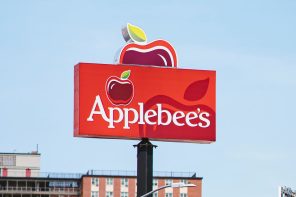The Greeks called them ‘pepon,’ meaning ‘large melon’. The French adapted this word to ‘pompon’, which the British changed to ‘pumpion’. The name cycle came full circle when American colonists found themselves in the homeland of the Cucurbita pepo, and, as Americans so often do, decided to throw British spelling out the window and call them ‘pumpkins’.
The terms pumpkin and squash are often used interchangeably, particularly in Australia and New Zealand. However, the term pumpkin generally describes winter squash that are hard-skinned, hard-fleshed, mature fruit.
There are many different varieties available, and while they vary in taste and texture, most can be used interchangeably in recipes. Flavour varies with variety, growing conditions and season. Therefore, buttercup squash grown at Pukekohe may taste quite different to the same variety grown in Marlborough. Similarly, pumpkins grown in the same area may taste different each season.
Supermarket squash have a very dark green hard skin and are similar in shape to buttercup squash. However, they have strong ribbed skin, whereas a buttercup is smoother. The skin can often change from green to an orangey colour with age. They weigh about 1.5kgs with a diameter of 10-15cm, have orange flesh and a very sweet flavour. Supermarket squash have a very good shelf life and are often found on retail shelves in the winter when other local squash types are no longer available.
Buttercup squash have dark, rich green, hard skin with speckles and stripes and a round flat shape. They are generally 15-20 cm in diameter and weigh about 1.5kg; the flesh is a fine-textured orange to dark yellow with a slightly sweet flavour. Immature buttercups have a paler flesh. The skin is softer than other pumpkin or squash types and therefore they have a shorter shelf life.
Crown or grey pumpkins have a hard blue/grey skin, with a rich orange flesh. Crown pumpkins are about 30 cm in diameter, 10 cm deep, and weigh about 4kg. The most common variety sold in New Zealand is Whangaparaoa. Because of their hard skin they keep well and are usually available all year round.
Halloween pumpkins have a bright orange skin that is very hard and knobbly. The flesh is very dense and is deep orange in colour. The most common variety is Red Warren.
Choose firm pumpkins and squash that have undamaged skin and feel heavy for their size. Select mature pumpkin and squash; they will be shiny or slightly slippery to feel, while an immature one will be slightly sticky. Another indication is brown flecks (or corking) on the stem – the more flecks, the more mature.
Pumpkins and squash are a good source of vitamin A, containing high levels of the carotenoids which the body converts to vitamin A. The stronger the colour of the flesh, the more carotenoids the pumpkin will contain. Pumpkin is also a good source of vitamin C, and a source of vitamin E plus contains dietary fibre and potassium at levels of dietary significance. Buttercup squash is a good source of folate, and a source of dietary fibre, vitamin E and niacin plus contains potassium. While pumpkin is lower in carbohydrate and calories compared to vegetables of similar texture like kumara or potatoes, Buttercup squash has a similar carbohydrate and calorie content to potatoes.
Gerrard O’Keefe, executive chef at The Heritage Experience, makes use of the pumpkin in his super rich pumpkin parfait with crystalizsed pistachio and coconut cream.






